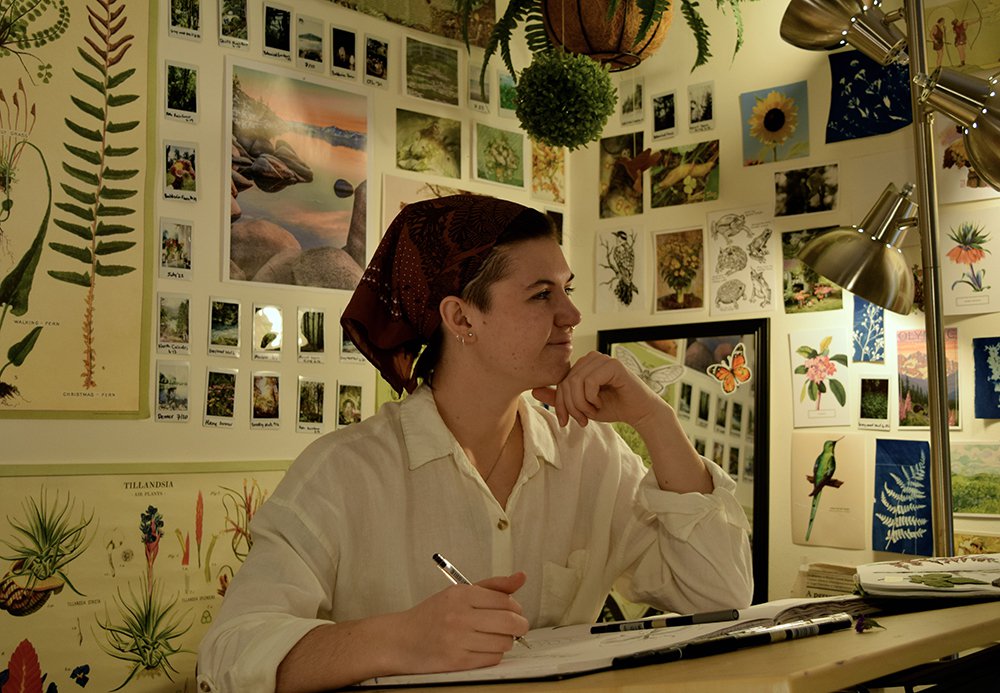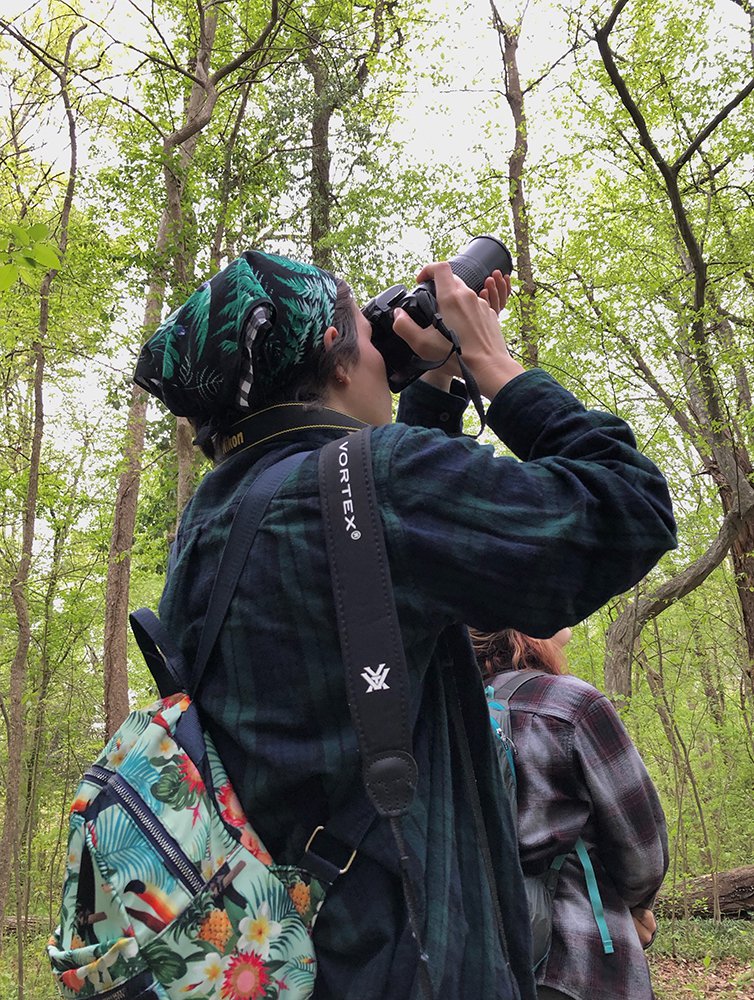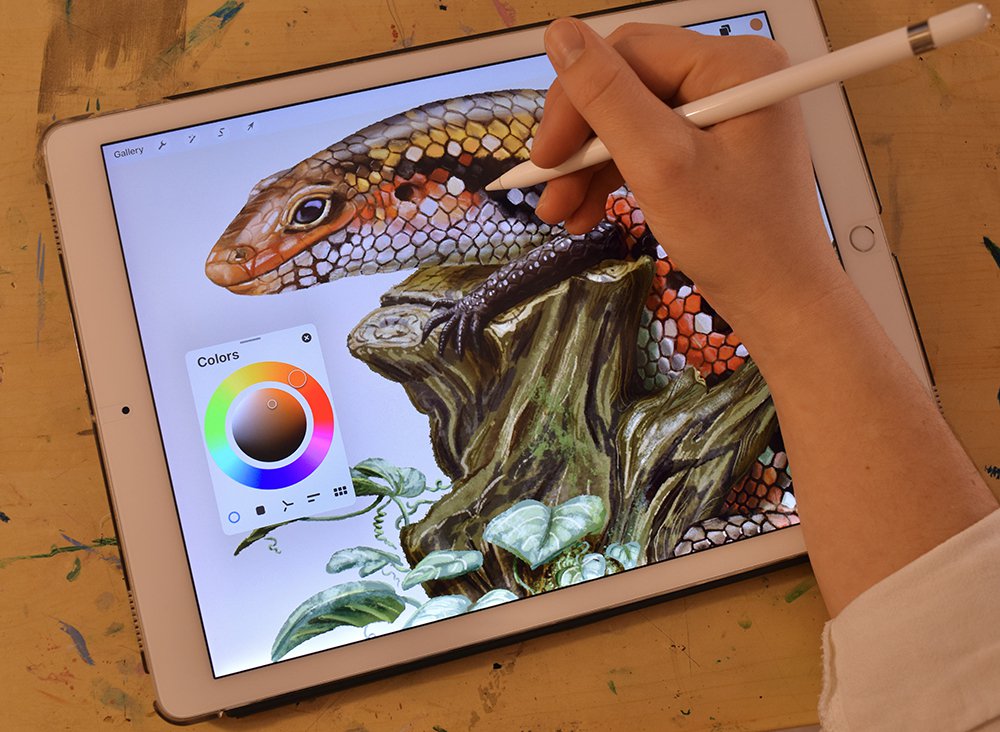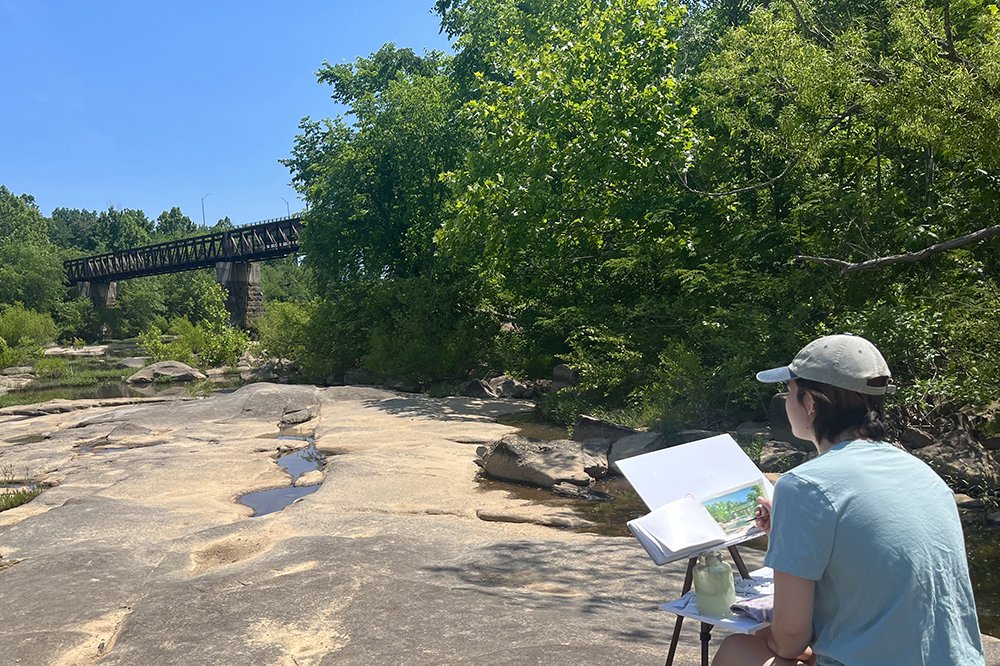What’s one way to draw people into science? Art! And who are masters at using art to communicate scientific information? Scientific illustrators! These niche artists play an important role in making science more accessible to broader audiences.

Scientific Illustrator Nick Garnhart working in their studio.
Nick Garnhart (they/them)
Scientific Illustrator
Bachelor of Fine Arts with a major in Communication Arts and a minor in Environmental Studies from Virginia Commonwealth University
Many people are interested in science and would like to learn more, but often science papers can be difficult to understand. Scientific illustrators capture the ideas and messages of a complex topic and translate it into something much more easily understood for those who don't have a science background.
Not only can an image communicate to those with different education levels, but it can transcend language barriers, too. If a paper is written in a language you aren't fluent in, you can't benefit from the research. With illustrations depicting the text, you can gain at least an idea of the research and the information in the paper.
Scientific illustration can also clarify complex processes that can not be easily photographed and are difficult to explain through text, such as the movements of groundwater, invisible processes of gases, microscopic organisms and so much more.

When I'm working on a project for a scientist, we will usually meet through a video call to discuss the concepts and scientific processes needing to be visualized. I will take notes and read materials to better understand the topic, then send the scientist a sketch of the proposed graphic. Once the sketch has been finalized, I will draw and color a clean version of the graphic, and make any edits for the scientist until we are both satisfied that the illustration accurately depicts what we're trying to communicate.
People are often surprised that I can create illustrations for topics I'm not an expert in. For example, I don't have formal education in hydrology but have been working on illustrations for two hydrologists writing a textbook. With their guidance, notes and the time I take to read and research the topics, I can create accurate figures for their book.
Scientific illustrators don’t need formal education beyond high school. That said, fine art education or training as well as a general understanding of–and interest in–environmental studies, ecology, biology and other scientific areas is recommended and highly beneficial.

The best part of my job is that I get to learn more about the ecology of the environment and how our world works. Every time I finish a project, I know more about an organism, environment or natural process than I did before. I love having the opportunity to share that knowledge with others through an interesting visual.
I am very passionate about communicating the environmental benefits of biodiversity and the importance of preserving the diverse ecosystems we have on Earth. As I continue on my career journey, I'd like to work with scientists who are advocating for or researching threatened species. Communicating the science of conservation and restoration of these organisms to the public is my career goal.
If you think you’re interested in being a scientific illustrator, here’s my advice: practice, practice, practice! No one becomes a great artist overnight, but everyone can learn to draw, no matter their beginning skill level. Taking art classes can help immensely. I took a more traditional route of going to art school, but there are hundreds of free lessons online which can teach you the fundamentals of art.

I also recommend people in and entering this field practice observational drawing. That means drawing what you see, as you see it. If you're drawing a flower, look at a real flower, versus a photo of a flower. This helps artists practice translating 3D objects into a 2D space and better understand light, among other benefits.
If you’ve honed your skills as an illustrator and are seeking paid work, reach out to scientists! Researchers are so nice and are just as excited to share science as you are. Oftentimes, researchers want graphics for their papers but don't have connections to artists. I work as a freelance artist, and many of my employment opportunities have come from word-of-mouth or by spontaneously reaching out to scientists and advertising my services.
Freelance artists often seek out their own opportunities or are recruited for stand-alone projects by an individual or organization. In-house artists are hired by the organization for all their projects. In-house artists can expect a regular paycheck but don't have the same freedom to explore other projects that a freelancer can.
Salary fluctuates for both freelance and in-house based on experience; $35/hour is the U.S. average, although this number varies depending on skill level, experience, job requirements, complexity and other project requirements.
Learn More
- View Nick’s scientific illustration portfolio
- Explore the Guild of Natural Science Illustrators


